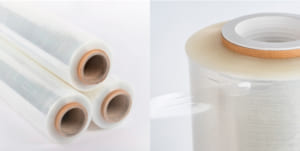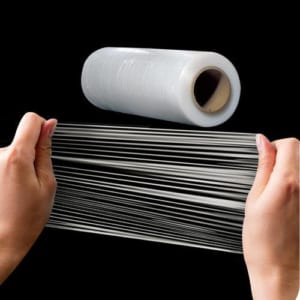Stretch wrap film has two primary production methods: blown and cast. Each process results in a unique set of film characteristics and properties. Let’s explore the key differences between blown and cast stretch wrap film.
First and foremost, the manufacturing process sets these films apart. Blown stretch film undergoes an extrusion process, where we blown molten polymer into a bubble, then collapsed and wound onto a roll. Transition, cast stretch wrap film, on the other hand, uses a flat-die extrusion method, where the molten polymer is extruded onto a chill roll, resulting in a flat, uniform film.

The distinct production methods also impact the overall film structure. Blown stretch film typically exhibits a more uniform thickness, as the inflation and collapsing process helps to evenly distribute the material. Transition, cast stretch pallet wrap may have a slightly more uneven thickness, as the flat-die extrusion can result in subtle variations across the width of the film.

In terms of mechanical properties, blown stretch film generally demonstrates superior tear resistance and puncture resistance. This is due to the molecular orientation created during the inflation and collapsing process. Transition, cast wrapping film, while still offering good strength characteristics. However, this may not match the robust performance of its blown counterpart.
Flexibility is another key difference between the two types of stretch wrap film.Blown films tend to be more flexible and consistent, allowing them to cling tightly to a wide range of products and pallets. Transition, cast films may be slightly stiffer. Therefore, they are better suited for applications where a more rigid wrap is desired.

Ultimately, both blown and cast film have their advantages. We widely use in various industries. The choice between the two often comes down to the specific requirements of the application. For example the desired performance characteristics, the size and shape of the items, and the overall packaging needs.

